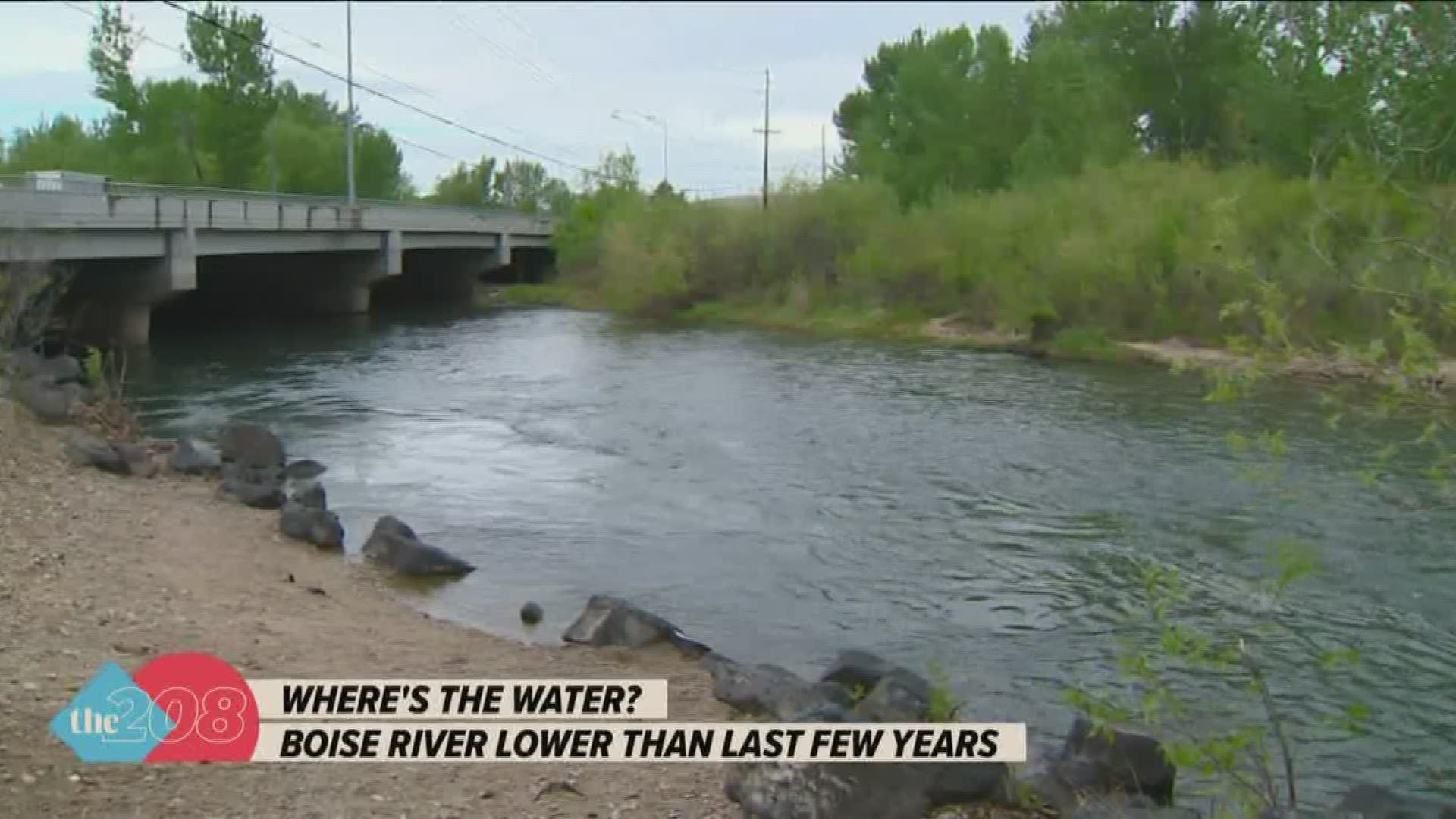BOISE, Idaho — We're still a long ways off from even thinking about jumping in the Boise River for a swim, especially when we have weather days like Wednesday.
But this is the time of year when we usually start seeing the water levels rise in the river.
The snow's melting and we should start to see that run downstream, right?
Well, John thinks so and he's noticed it really hasn't.
"Boise River flows at the Glenwood Bridge are way below normal for this time of year. What gives?" John asks.
What gives is what hasn't been given to us - the rain and snow totals like we've seen the last several years.
Right now, the Boise Basin is sitting about 66 percent of average when it comes to snow water equivalent, which is basically how much water is left in what's left of the snowpack in the mountains.
So that has lead to a lower than what we are used to seeing when it comes to Boise River runoff.
The amount of water we see flowing down the river is is based solely on diversion demand, meaning, they are releasing about 3,500 cubic feet per second from Lucky Peak Reservoir, but most of that is heading off into canals and irrigation companies.
Right now, the Boise River is running just under 800 cfs at the Glenwood Bridge gauge.
Last year at this time we were just under 8,000 cfs,
So yeah, it looks a little low.
"Well everybody is so used to seeing flood control operations, so the river levels are higher during those times, but as we are facing a situation where we may or may not fill all three reservoirs, we are operating just as tightly as possible and right now we are not expecting any flood control operations on the Boise," said Rex Barrie, Boise River Water Master.
"So basically what you're saying is like in years past where we've had to make room in the reservoirs by letting water out, we're not in that situation this year?" asked KTVB.
"That is correct, we are currently not releasing anything for any flood control operations," Barrie said.
"So people who are kind of used to these above average years and what you're saying is this year is right around average," asked KTVB.
"Or maybe just a little below, the irrigation diversion the guys are really being conservative, normally we'd be running a little higher flow at the Glenwood gauge, which a lot of people look at, but, because the demand is so conservative we're able to run a little bit lower and maximize as much water as we can capture in the reservoirs," Barrie said.
Three springs ago, as we were coming out of the snow-pacalypse winter, the river was running near record highs, around 9,000 cubic feet per second.
Back then, to make room for the runoff, we were trying to make a hole in the reservoir system.
This year, we are trying to fill a hole so we have enough to last through summer.
Barrie says don't be surprised though to see it increase over the next couple of months with fluctuations for fish and as crops start to come in, with the warmer weather there will be more calls for irrigation.
Watch more of The 208:
See all of the latest episodes of KTVB's newest show in our YouTube playlist:
Join 'The 208' conversation:
- Text us at (208) 321-5614
- E-mail us at the208@ktvb.com
- Join our The 208 Facebook group: https://www.facebook.com/groups/the208KTVB/
- Follow us on Twitter: @the208KTVB or tweet #the208 and #SoIdaho
- Follow us on Instagram: @the208KTVB
- Bookmark our landing page: /the-208
- And we also turn each episode into a podcast on Spotify or Podbeam
- Still reading this list? We're on YouTube, too:

